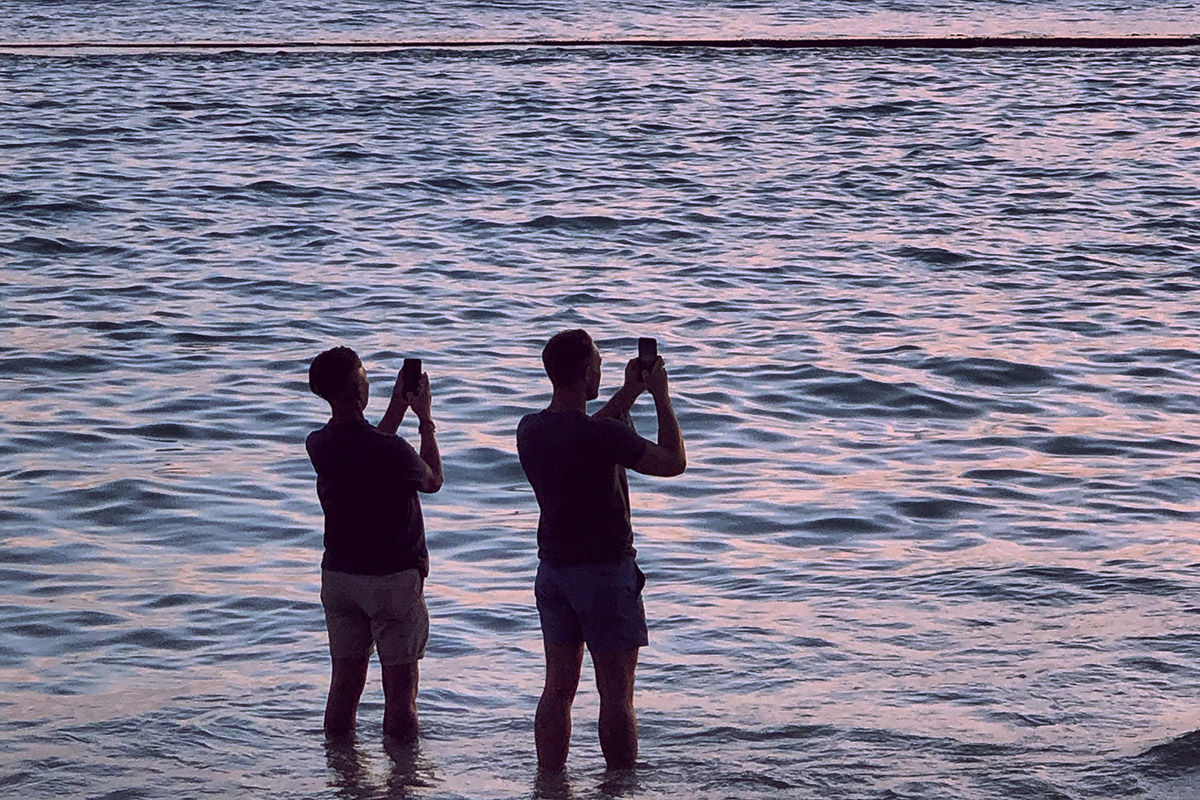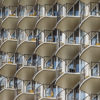During quarantine, a visual artist processes our collective transition into a post-pandemic society and the complicated emotions that come with it.
Quarantine Island was a small, muddy islet on Kahololoa reef outside Honolulu Harbor. Established under King Kamehameha V in 1869, it was here that ships entering in the harbor with sick passengers docked to treat and isolate.
This was during a time when deadly diseases in Hawaiʻi were rampant as settlers arrived, partially in response to the growing plantation industry and demands for labor. Kānaka, whose bodies were susceptible to foreign diseases, suffered at devastating rates. Quarantine Island was eventually filled in and expanded into what is now known as Sand Island, a continuation of this area’s complex history.
I can imagine myself as an island; connected to oceans, with shores of skin, permeable. Off the coast, there is my own Quarantine Island where I put things, material and immaterial, I deem unsafe for some amount of time in hopes that their temporary isolation will make them less dangerous to me. Sometimes I visit this island, activating and deactivating my sense of danger, gloves peeking out of the back pocket of my jeans, a mask tied hastily to my head, tangled with strands of bleached hair. My phone is never far away. My psychological state is amplified by social media and breaking news of daily Covid-19 case counts, my physical life ritualized by a procession of safety: mask up, stay back, use a shield, sanitize your hands, follow the arrows. We straddle these experiences, we lose our balance, slip, and we find ourselves immersed when we least anticipate. It is fitting that we refer to the spread of this virus in waves—that which swells and inundates bodies. As if we aren’t already swimming.
I can imagine myself as an island; connected to oceans, with shores of skin, permeable.


One day I’m standing at the concrete cliffs of Keehi Transfer Station overlooking mountainous heaps of trash against the backdrop of the Wai‘anae Range. Waste neither originates here nor stays for long, this is just one stop along the journey of mass disposal, an interrogation of the conditions of the present. I’m with a friend and we’ve borrowed a truck, it’s filled with bulk items we couldn’t dispose of elsewhere.
The air is still and thick with the scent of things someone didn’t want anymore. A couch they used to relax on with their three best friends from college, a wall constructed from quarter-inch ply that didn’t prevent sound from traveling between bedroom and living room in a studio-converted one-bedroom apartment. A lampstand with no shade. A gigantic teddy bear (once a grand gesture) tacked to a beam, like a beacon, 30 feet off the cavernous floor of discarded stuff. Huge things seem tiny when thrown over the railing here, as they scatter into shards dutifully swept up by a bulldozer. I am allowed to participate, briefly. I enter and exit this industrial ecosystem of exposure and contamination. I begin wondering what other waste I should have brought.
We straddle these experiences, we lose our balance, slip, and we find ourselves immersed when we least anticipate.


Magic Island is a place I find myself at dusk. Four months into the pandemic, walking through Ala Moana Park is an exercise in chaos that quiets my mind, and arriving at this peninsula usually rewards me with my choice of benches angled to face the ocean. I’m reminded that this constructed landscape was once slated to be a resort complex, before public opposition spurred its use as recreational grounds. There are groups of friends lounging on the sand, families of all sorts under tents, aunties, uncles, single white men on hoverboards, fruit flies, joyful and hysterical children, ladies exercising, fishermen spaced six feet apart, shallow water lapping around their calves. The reflective glass walls of the high-rises are shades of ocean and sky blue. The streetlights glow orange, casting shadows around patches of wet sand, and the industrial lights from Kakaʻako form a second sunset as they begin to hum. Little dogs pull on their little leashes as they trot in little circles with their masters. A group of twentysomethings ride by on Biki bikes; one exclaims, “I feel like I’m living life!”
There are systems in place, alienation, disconnection, coping mechanisms. There is movement as there has always been, and with it, a sense of calm. All the grinding away, overheating, but then this: the littoral zone in twilight filled with imported sand.
Marika Emi is the founder of nonprofit publishing imprint Tropic Editions, the editor of Tropic Zine, and the co-director of Aupuni Space.
This article is part of The Pandemic Diaries, a series of essays written in the wake of the coronavirus pandemic.


